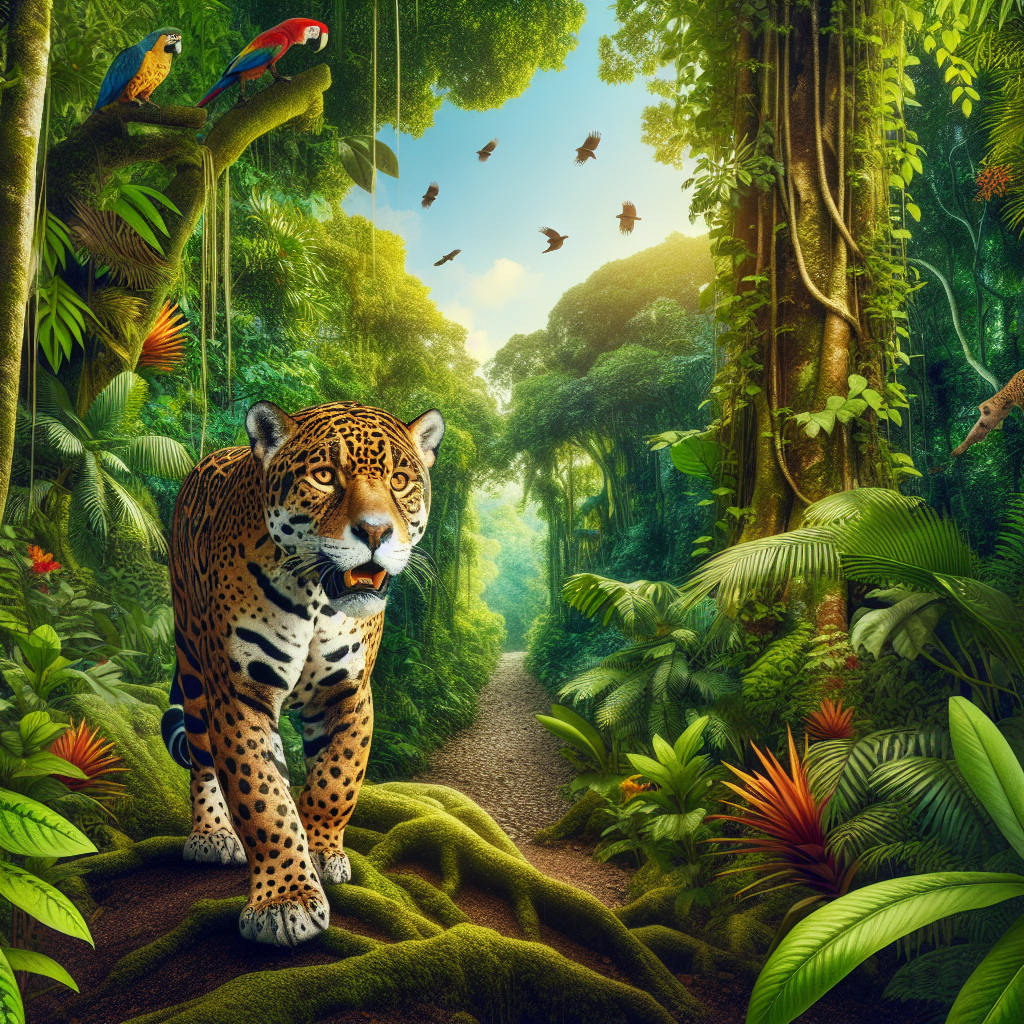The Role of Jaguars in Tulum’s Ecosystem
The Historical Significance of Jaguars
Jaguars (Panthera onca) are more than just apex predators; they embody a cultural and spiritual significance that dates back to ancient civilizations in Mesoamerica. In Tulum, a region rich in Mayan heritage, the jaguar was venerated as a symbol of strength, power, and the intertwining of earth and the divine. Temples and artifacts preserved from the Mayan era showcase this reverence, reflecting an intrinsic relationship deeply rooted in local mythology and traditions.
Ecological Importance of Jaguars
Jaguars play a critical role in maintaining the ecological balance within Tulum’s diverse ecosystems. As apex predators, they help regulate populations of various prey species, including deer, peccaries, and smaller mammals. By controlling these populations, jaguars indirectly support the health of vegetation, which is essential for preventing overgrazing and maintaining plant diversity.
Keystone Species
The jaguar is classified as a keystone species, meaning its presence significantly impacts the structure of the ecological community. When jaguar populations are healthy, they maintain the stability and biodiversity of the habitats they roam. In areas where jaguars have declined, there is often a resultant rise in the populations of smaller herbivores, leading to habitat degradation and loss of flora. This cascading effect demonstrates the critical role jaguars play in sustaining the entire ecosystem.
Habitat and Conservation Status
Tulum is surrounded by a variety of habitats that support jaguar populations, including tropical forests, wetlands, and coastal areas. These environments provide ample food sources and shelter, making Tulum an essential area for the preservation of jaguars. However, like many species, jaguars face numerous threats, including habitat loss due to deforestation, urban development, and agricultural expansion.
Protected Areas
Recognizing the importance of jaguars, several conservation initiatives aim to protect their habitats. The Tulum Biosphere Reserve is one such area that serves as a refuge for not only jaguars but also numerous other species. These reserves facilitate wildlife corridors, allowing jaguars to roam and breed without significant barriers. Conservation efforts also work towards restoring degraded habitats to ensure that the ecological frameworks supporting these predators remain intact.
The Social Role of Jaguars
Beyond their ecological importance, jaguars hold substantial social value in Tulum. Residents and visitors alike appreciate the presence of jaguars as part of the region’s natural heritage. Eco-tourism has emerged as a powerful avenue for promoting conservation efforts, providing economic incentives that contribute to preserving local wildlife. Tourists are drawn to Tulum for its breathtaking beauty and the opportunity to experience its unique biodiversity, including the chance to learn about jaguars and their habitat.
Community Engagement
Local communities are increasingly becoming involved in conservation efforts. Education programs focused on the importance of jaguars encourage sustainable practices and foster a sense of responsibility among community members. Initiatives that promote jaguar protection often empower residents, creating job opportunities in eco-tourism and research while instilling pride in preserving the region’s biodiversity.
The Role of Jaguars in Climate Regulation
Jaguars contribute to climate regulation indirectly through their feeding habits. By preying on herbivores, they maintain healthy populations that contribute to the cycling of nutrients within the ecosystem. Healthy vegetation plays a vital role in capturing carbon, helping mitigate climate change impacts. Thus, the conservation of jaguars not only aids biodiversity but also contributes to broader climate resilience efforts.
Research and Monitoring
Ongoing research is essential for understanding the complex behavior and ecology of jaguars in Tulum. Wildlife biologists utilize various methods such as camera trapping and genetic analysis to monitor jaguar populations and their movements. This research not only informs conservation strategies but also helps gauge the overall health of the ecosystem. Collaboration with local stakeholders and researchers can yield valuable data that enhances preservation efforts.
Challenges to Jaguar Conservation
Despite concerted efforts, several challenges persist in the conservation of jaguars in Tulum. Human-wildlife conflict arises as jaguars occasionally prey on livestock, leading to tensions between farmers and conservationists. Educative initiatives are essential in mitigating these conflicts, promoting coexistence strategies, such as livestock protection measures.
Climate Change
Climate change poses an additional threat to jaguar habitats in Tulum. As temperatures rise and weather patterns shift, the environmental conditions that sustain the region’s biodiversity may be compromised. Addressing these challenges requires a multifaceted approach, combining habitat protection, community engagement, and climate adaptation strategies.
Future of Jaguars in Tulum
The future of jaguars in Tulum is intertwined with the ongoing efforts to balance development and conservation. Local, national, and international cooperation is crucial for ensuring that jaguar populations continue to thrive. By promoting policies that prioritize environmental preservation and fostering awareness among visitors, Tulum can maintain its status as a biodiverse haven for jaguars.
Advocacy and Awareness
Awareness campaigns play a pivotal role in creating a culture of conservation surrounding jaguars in Tulum. Engaging the public through workshops, social media outreach, and collaborations with environmental NGOs allows for a broader understanding of the significance of jaguars within the ecosystem. Such advocacy also highlights the role of threatened species in global biodiversity and encourages more responsible tourism practices among visitors.
The Interconnectedness of Species
The well-being of jaguars is intricately linked to the health of myriad species within their habitat. Protecting jaguar populations naturally extends to safeguarding the diverse flora and fauna in Tulum. The interconnectedness of species underscores the importance of holistic conservation practices that consider the entire ecosystem rather than focusing on single species.
Conclusion
In Tulum, the jaguar stands as a pillar of ecological integrity, symbolizing the rich biodiversity that characterizes the region. The continued survival of this majestic big cat rests on the shoulders of conservationists, local communities, and visitors alike, all of whom play a crucial role in fostering an environment where nature and culture coexist harmoniously. By recognizing the importance of jaguars in Tulum’s biodiversity, collective efforts can ensure that future generations inherit a vibrant and dynamic ecosystem.







